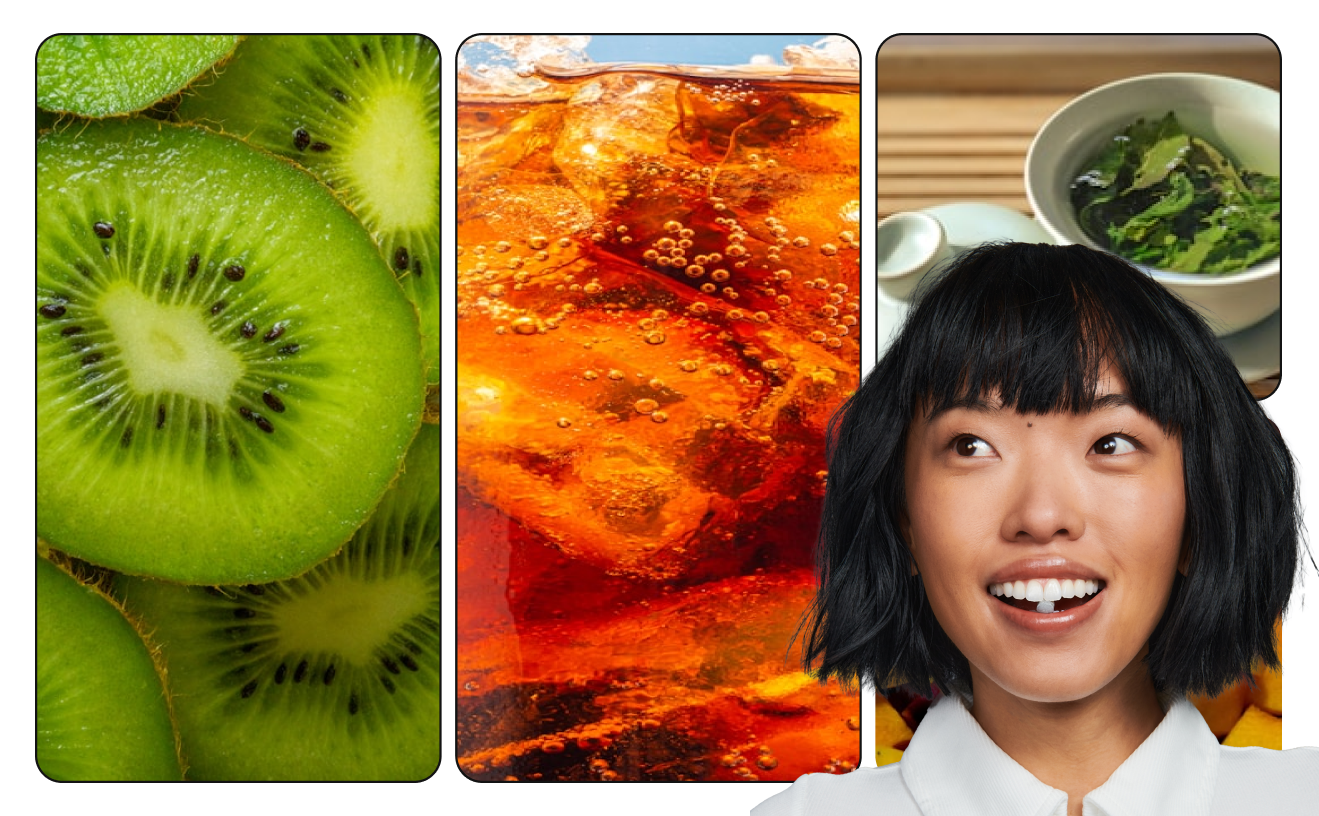Benefits of Hyaluronic Acid for the Face and Body
If you’re looking to help your skin look and feel its best, we got just the thing for you. Let us introduce you to…hyaluronic acid!
You actually may be more familiar with hyaluronic acid than you even realize. Not only is hyaluronic acid a popular ingredient in skincare and wellness products, but it is also naturally produced within the body as hyaluronan.
But what exactly is hyaluronic acid, and why is this active ingredient so beneficial when used on the face and body as part of your skincare routine? Stay tuned as we cover the ins and outs of hyaluronic acid.
What Is Hyaluronic Acid?
Hyaluronic acid, also known as HA, is a polysaccharide made of sugar molecules. Within the body, this compound has a transparent, gooey consistency and is found in the skin, eyes, joints, and connective tissues.
By binding with water molecules, hyaluronic acid helps retain moisture within the skin and keep joints and tissues sufficiently lubricated.
One of HA’s main feats is that it can absorb over a thousand times its weight in water. That is a whole lot of hydration this mighty molecule has to offer — and our skin truly basks in it.
What Forms Does Hyaluronic Acid Come In?
Outside of the hyaluronic acid produced in your body, you’ll find HA in oral supplements, injections, or as a skincare ingredient in wellness products.
Hyaluronic acid supplements have shown promise in reducing signs of aging and helping lubricate the joints to reduce joint discomfort. However, you should speak to a doctor before using HA supplements, as they may interact with other medications.
Hyaluronic acid injections can also be used to reduce joint discomfort–especially for people with osteoarthritis — and have a range of cosmetic uses as well. Dermatologists and plastic surgeons use HA in dermal fillers to temporarily give the face a firmer, plumper appearance. However, HA injections can be expensive, require a doctor to perform the injection, and are associated with more side effects than HA topicals are.
Hyaluronic acid topicals are serums and moisturizers that allow you to apply HA directly on the skin. When used as part of your everyday skincare routine, HA can help reduce signs of aging, hydrate the skin, and keep the face smooth and bright.
And since hyaluronic acid is naturally produced within the body, allergic reactions are extremely rare, even for those with sensitive skin.
When applied topically, HA is considered an extremely safe ingredient for all skin types with very little risk of side effects or adverse reactions–although we always recommend testing a new skincare ingredient on a small patch of skin before using just to be sure!
What Are the Benefits of Using Hyaluronic Acid On the Skin?
While hyaluronic acid already serves as a stellar moisturizer within the body, supplementing our natural production of HA with that found in skincare products such as creams, serums, moisturizers, and balms can benefit the skin even further, especially as we age.
Anti-Aging Properties
Typically, our bodies contain 10 to 20 grams of hyaluronic acid, about 50% of which is found in the skin.
But, as we age, our production of HA declines. Smoking, pollution, and exposure to UV rays can also reduce HA levels in the skin.
The skin becomes more prone to dehydration with less hyaluronic acid production, leading to a loss of firmness and plumpness. Wrinkles and fine lines are also more likely to show in dehydrated skin.
That’s where topical hyaluronic acid comes into play. When the body begins producing less HA — along with other skin-hydrating molecules like collagen — using hyaluronic acid serums or balms on the face and body can help rehydrate the skin to reduce the appearance of wrinkles, lines, and other signs of aging.
Supports Skin Hydration
When it comes to locking in moisture, hyaluronic acid is highly effective. By absorbing a thousand times its weight in water, HA works as a powerful sponge within.
When the skin lacks water, it can become dry, irritated, and more prone to damage. As a humectant, hyaluronic acid helps ensure the skin retains enough water by locking in moisture and keeping it from evaporating too quickly.
Protects the Skin Barrier
Our outermost layer of skin (the epidermis) serves as a barrier that wraps around our skin cells and protects us from potentially harmful outside forces such as bacteria, chemicals, pollution, and other foreign objects.
One of the main ways we can keep our protective skin barrier working is by (you guessed it) keeping that epidermis well hydrated.
This is because dehydrated, inadequately nourished skin is more likely to dry out and crack. This can lead to breaks in the barrier that is meant to keep external factors out and ultimately increase the risk of unwanted outside objects penetrating the barrier and moving deeper into the skin.
But, if your skin does tend to dry out and break, don’t despair!
Using hyaluronic acid on the skin can reduce dryness, redness, and breakage by helping to keep skin well-nourished — strengthening the skin barrier so it can better protect us within.
As a key player in our connective tissue, hyaluronic acid works to soothe and support your skin.
Improves Skin Elasticity and Texture
By helping rehydrate the skin barrier, HA can help tighten and brighten the skin tone.
Keeping the skin hydrated also helps the skin maintain its elasticity and smoothness. Research suggests that those using hyaluronic acid experience decreased roughness and improved elasticity.
Skin elasticity and suppleness also play a huge role in keeping our skin looking young and happy. By boosting the appearance of tightness and smoothness, HA can help add firmness to the facial contours and give our skin that sought-after rejuvenated glow.
Helps Reduce the Appearance of Blemishes on the Face
Along with soothing dry skin, hyaluronic acid can also greatly benefit oily skin.
When oily skin is not receiving enough hydration, it can produce more oil to make up for the water loss, which can clog the pores and lead to breakouts and blemishes. But when HA is used on the face to improve skin moisture levels, it can help naturally lower oil production and reduce swelling, helping to limit breakouts as well.
What Should I Look for When Choosing a Hyaluronic Acid Skincare Product?
Alright, now that you are in the know about all the ways HA can support your skin, how can you make sure you’re getting the most out of your hyaluronic acid skincare product?
Molecular Weight
One major factor you’ll want to consider is the molecular weight. You'll get the most out of a product containing HA molecules with a lower molecular weight.
This is because the higher the molecular weight, the bigger the HA molecule is. And, in this case, bigger isn’t always better.
When it comes to hyaluronic acid molecules, bigger molecules can’t penetrate the skin as easily as smaller HA molecules can. So even though larger molecules can easily bind with water, they’ll sit on the skin's surface where they aren’t able to offer as much support.
Smaller HA molecules with a lower molecular weight, however, will move beyond the surface of the skin to provide a deeper and more thorough source of hydration and nourishment.
Typically, your product should include hyaluronic acid molecules with a molecular weight falling between 50 and 1,000 kDa. HA within this range is best absorbed into the skin, where it can best help lock in moisture.
Clean Ingredients
You’ll also want to check that your product doesn’t include any potentially harmful chemicals or additives, as HA with a low molecular weight can carry such ingredients deeper into the skin.
At Bite, we use only natural ingredients free of any harsh sulfates, parabens, or preservatives — so you can feel good about what’s going into your body both inside and out.
How Is Hyaluronic Acid Sourced?
Another factor to consider when choosing the right product for you is how HA was sourced — hyaluronic acid can be animal-derived or plant-derived.
While animal-derived HA is much less common in topical products, there are cases where hyaluronic acid is sourced from the combs of roosters.
But, don’t worry, all of the ingredients in our Body Balm are vegan and ethically sourced, including our plant-derived hyaluronic acid.
Plant-derived hyaluronic acid is extracted through microbial fermentation. Basically, a bacterial strain that contains HA is fermented to create the ideal molecular weights for our skin–cruelty-free.
Not only is plant-derived HA cruelty-free, but it also has much less of an environmental impact, as this method produces less pollution, too. We call that a win-win-win: a win for our feathered friends, a win for mother nature, and a win for our skin!
Hydrate Your Skin With Bite Body Balm
Our ultra-nourishing Body Balm utilizes plant-based hyaluronic acid along with other clean and soothing natural ingredients such as shea butter, vegan squalane, and rosehip oil.
Along with keeping our products vegan and cruelty-free, we honor our sustainability mission by keeping our products free of plastic and our shipping carbon neutral.
Our gentle and hydrating balm even comes in a plastic-free and travel-friendly case. When it’s time to replace your first bar of body balm, simply order a refill that will fit right into your reusable case.
It’s the ultra-soothing, skin-supporting gift that keeps giving.
Bottom Line
As a molecule found naturally in the body, hyaluronic can bind with water to lock in moisture and keep the skin soft, smooth, firm, and young-looking. While naturally produced in the body, you can benefit by adding topicals containing hyaluronic acid to your skincare regimen.
Because our natural production of HA drops around age 30, adding topical hyaluronic acid to your skincare routine can help repair and rejuvenate the skin. HA is safe to use on the face and body and can benefit dry skin, oily skin, and sensitive skin alike.
With Bite, you can nourish your skin with our cruelty-free hyaluronic acid Body Balm — delivered sans-plastic straight to your doorstep.
Sources
Efficacy of a New Topical Nano-hyaluronic Acid in Humans | PMC
Hyaluronic acid: A key molecule in skin aging | PMC
The 24-hour skin hydration and barrier function effects of a hyaluronic acid 1% | CCID
Efficacy of a New Topical Nano-hyaluronic Acid in Humans | PMC


